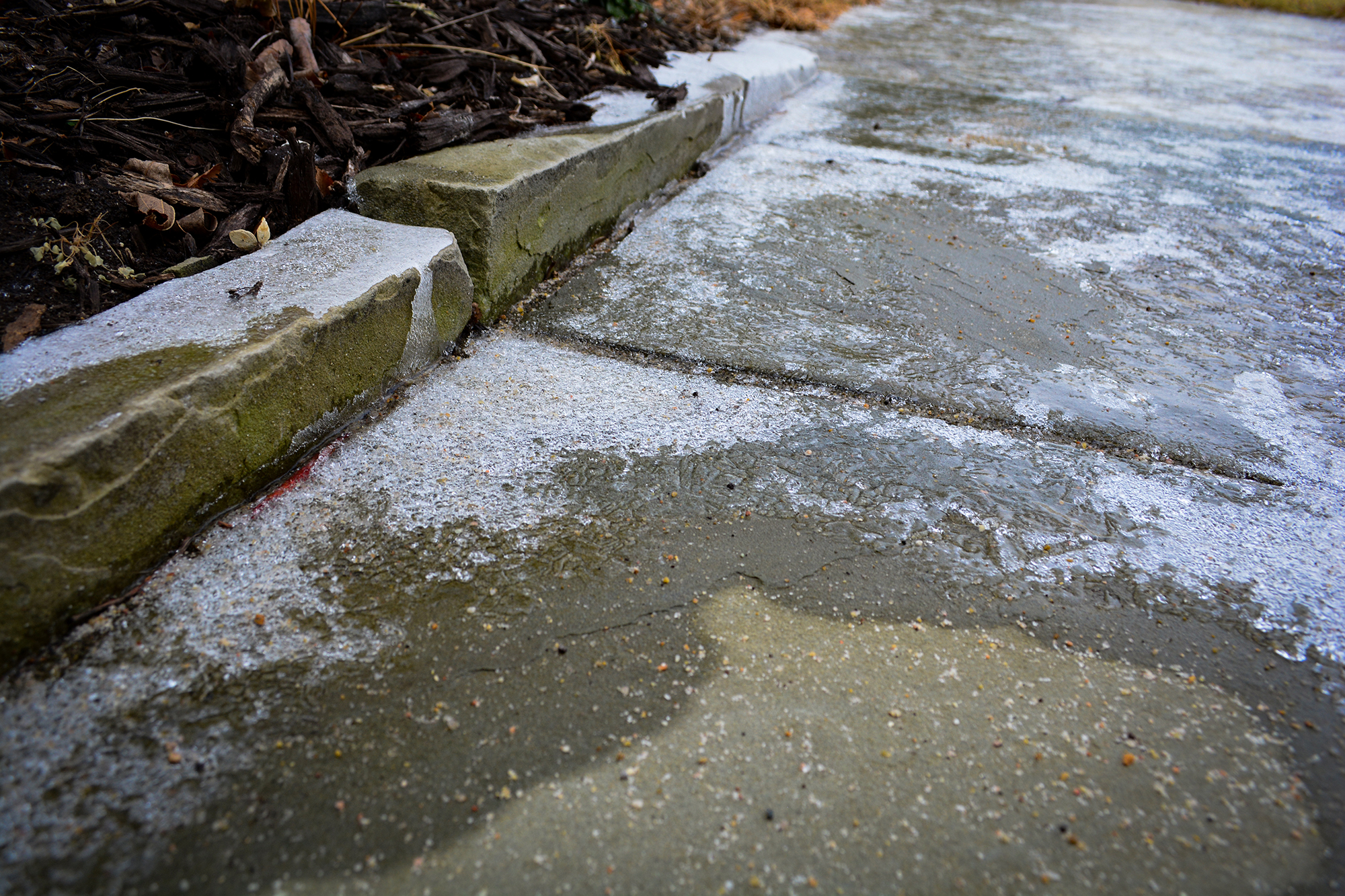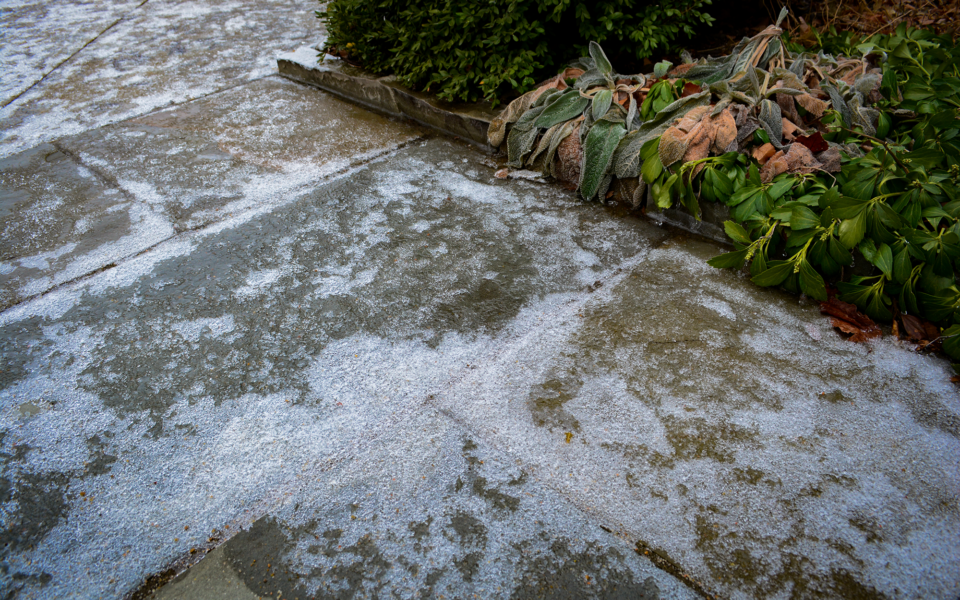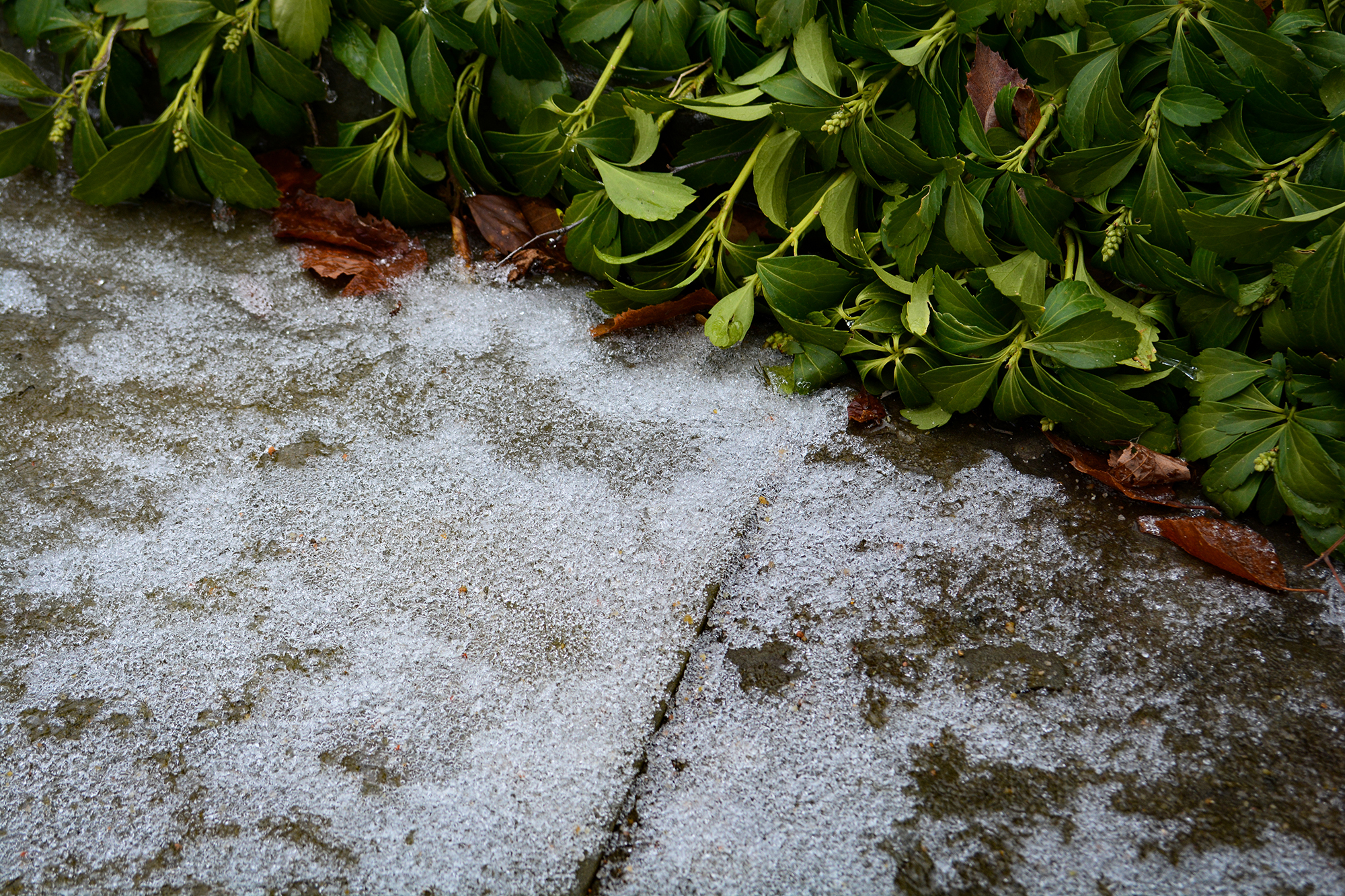Winter Paver Care: How does Ice melt affect my Pavers?
Icy Nebraska winters can make navigating concrete and pavers dangerous. Ice-melt chemicals may make the surface less daunting, but can also be toxic to your patio, pets and landscape. Here we provide tips for balancing safety with the long-term health of your hardscape and plantings.
How do ice-melt (including rock salts) damage pavers and concrete?
Ice melts cause more frequent and intense freeze-thaw periods. Concrete is very strong but has very little flexibility. It also is composed of a mixture of several different sized particles, which means that it is porous. While water doesn’t flow through concrete readily, (see the Hoover Dam), concrete can and will absorb water if it is subject to long exposure to moisture. When moisture enters the concrete as liquid and then freezes, the water can expand in volume by up to 9%.When this happens, the concrete, having little flexibility, can crack or spall. Ice-melt causes water to freeze and thaw more quickly inside the concrete, accelerating potential damage.
Concrete pavers are far more resilient freeze-thaw cycles than poured-in-place concrete for two reasons. (1)Pavers are manufactured to be far denser and stronger than poured concrete, therefore much less likely to spall and crack. (2) Because they are individual pieces, pavers have individual control joints at every paver, so they will not crack due to the freeze and thaw cycle underneath the pavement like poured concrete.
Certain ice melts can chemically react with concrete causing cosmetic or structural damage.

Chemicals within the ice melt can degrade concrete. Some advertise rapid temperature change which helps in the short-term but can make the concrete crack and spall due to more freeze-thaw cycles.
What should I do if I need to apply ice melt to my pavers?
1. Only use ice melt in areas of winter traffic. If you are not going to use part of your patio, it is best to apply sand or nothing at all.
2. If possible use sand. Sand will not melt the ice, but it can serve as a traction aid and will not cause damage to the pavers or landscape.
3. Mix sand with ice melt salts to minimize the amount you need to use.
4. Don’t apply higher than the recommended rates of ice melt.
5. Only use ice melt for melting ice. Remove as much snow and ice as you can first.
6. Once ice is loose, remove it to prevent salt buildup
7. Wash away salt residue in the Spring or as soon as warmer temperatures allow.
8. Remember plants, pets and wildlife don’t like the chemicals either. The less you use, the less that gets washed into the landscape.
9. If ice melt has been applied, avoid pilling any new snow at the edge of the surface which can concentrate most of the chemical to one location.
What type of ice melts should I use?
Product: Sodium Chloride (Rock Salt)
Notes: Effective to 15 degrees F, damages vegetation when over applied, Do not apply on concrete less than one year old. OK in moderation.
Product: Potassium Chloride (Prestone Heat)
Notes: Effective to -15 degrees F, less damage to concrete, can pollute local waterways. Skin irritant. Ok in moderation
Product: Calcium Chloride (Excel 50)
Notes: Effective to -20 degrees F, skin irritant, toxic if ingested, damages vegetation, chemical damage to concrete. Not Recommended
Product: Magnesium Chloride (Road Runner)
Notes: Effective to -8 degrees F, pet and eco-friendly when not over-applied. Likely to cause chemical damage to thev concrete. Not Recommended
Any of these products could potentially be used, each has its own drawbacks. The use of Magnesium based products are discouraged by most paver manufacturers, as they can damage concrete via both freeze thaw acceleration, and chemical reaction. Other fertilizer based products such as Ammonium Nitrate or Ammonium Sulfate should also be avoided due to their chemical reactivity.
Please use your best judgment if ice melt is needed on your walks or patios. Always err on the side of safety, and when the danger has passed, please clean the area to help preserve your pavers, and they will last a lifetime.


